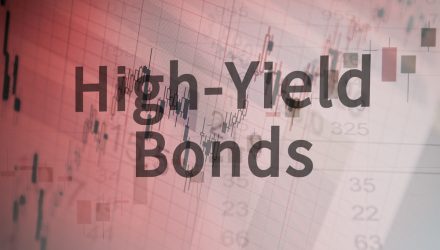With the economy staring at a possible coronavirus-induced recession in the face, investors need to be wary of risky, highly-leveraged companies and exchange-traded funds (ETFs) that hold this debt as part of their high-yield strategy. S&P Global Ratings is forecasting that the default rate for this high-yield debt will be 10% over the next year.
“The current recession in the U.S. this year is coming at a time when the speculative-grade market is historically vulnerable to a liquidity freeze or an earnings drop,” Nick Kraemer head of S&P Global Ratings Performance Analytics, said in a statement.
Investors need to take heed and use due diligence to decide whether the extra risk is worth the extra yield. One of the ongoing risks floating in the bond markets was the lowest investment grade bonds, rated BBB, were at risk of slipping into junk territory.
US Corporate BBB Bond Risk Premium data by YCharts
One way to stem the tide is for investors to focus on quality, investment-grade debt that is less likely to default in a market downturn. Investment-grade corporate bond-focused fixed-income ETF options include the iShares Intermediate Credit Bond ETF (NASDAQ: CIU).
CIU tracks the investment results of the Bloomberg Barclays U.S. Intermediate Credit Bond Index. CIU focuses on investment-grade corporate debt and sovereign, supranational, local authority and non-U.S. agency bonds that are U.S. dollar-denominated and have a remaining maturity of greater than one year and less than or equal to ten years.
Other High Yield Avenues
If investors still want to quench their thirst for high yield debt, they can look to ETFs like The High Yield ETF (NYSEArca: HYLD). HYLD seeks high current income with a secondary goal of capital appreciation by selecting a focused portfolio of high-yield debt securities, which include senior and subordinated corporate debt obligations, such as loans, bonds, debentures, notes, and commercial paper.
Another option is the VanEck Vectors Fallen Angel High Yield Bond ETF (BATS: ANGL). ANGL seeks to replicate as closely as possible the price and yield performance of the ICE BofAML US Fallen Angel High Yield Index, which is comprised of below investment grade corporate bonds denominated in U.S. dollars that were rated investment grade at the time of issuance.
ANGL essentially focuses on debt that has fallen out of investment-grade favor and is now repurposed for high yield returns with the downgraded-to-junk status.
For investors seeking high-yielding income and emerging markets exposure, they can look to the VanEck Vectors EM High Yield Bond ETF (NYSEArca: HYEM). HYEM seeks to replicate the ICE BofAML Diversified High Yield US Emerging Markets Corporate Plus Index, which is comprised of U.S. dollar-denominated bonds issued by non-sovereign emerging market issuers that have a below investment grade rating and that are issued in the major domestic and Eurobond markets.
For more market trends, visit ETF Trends.


